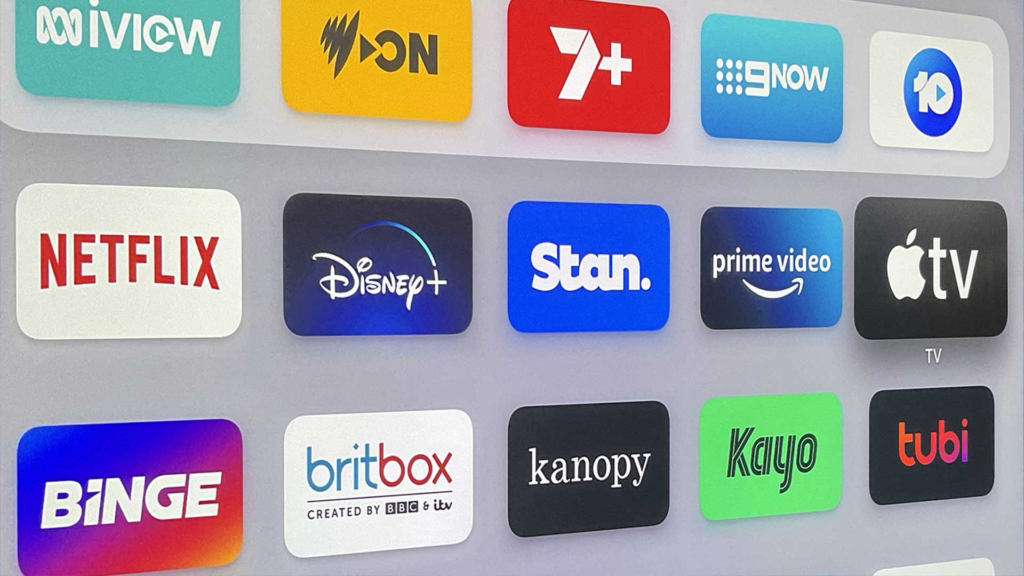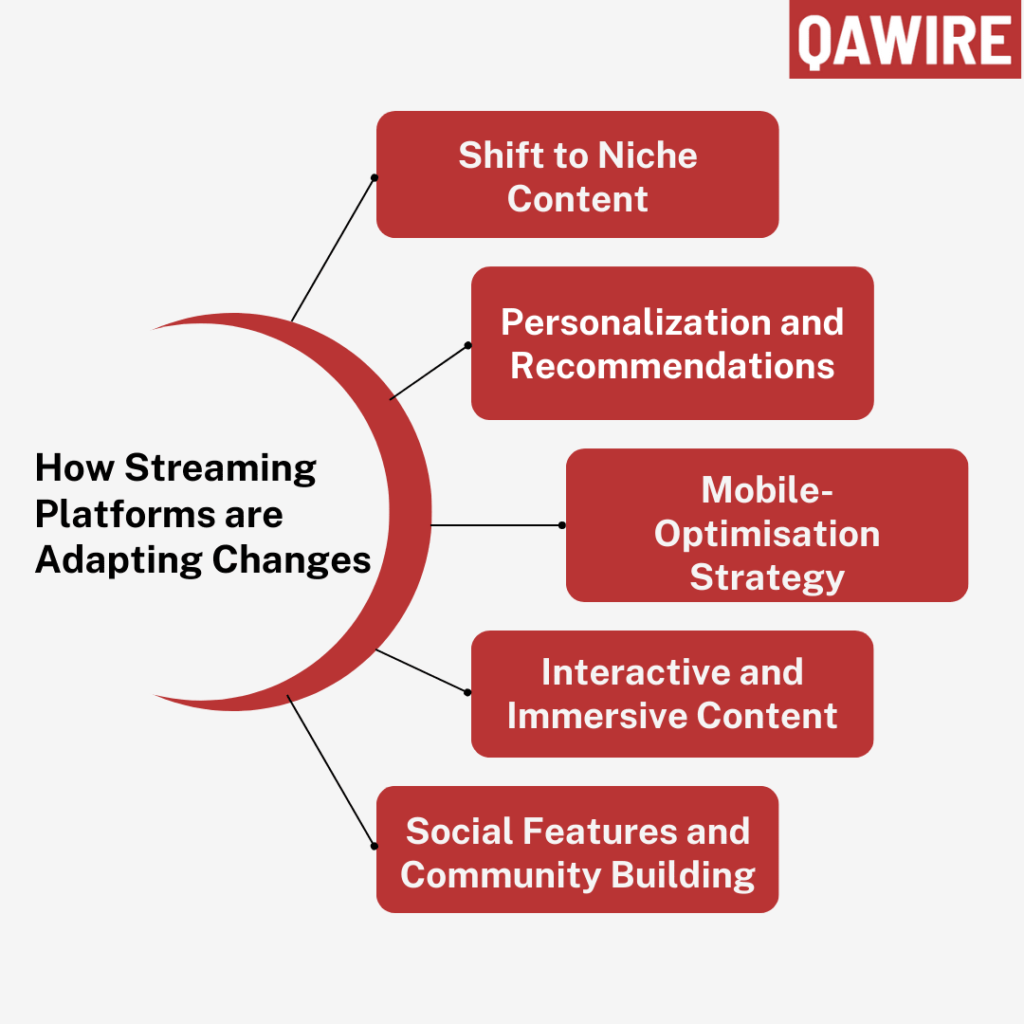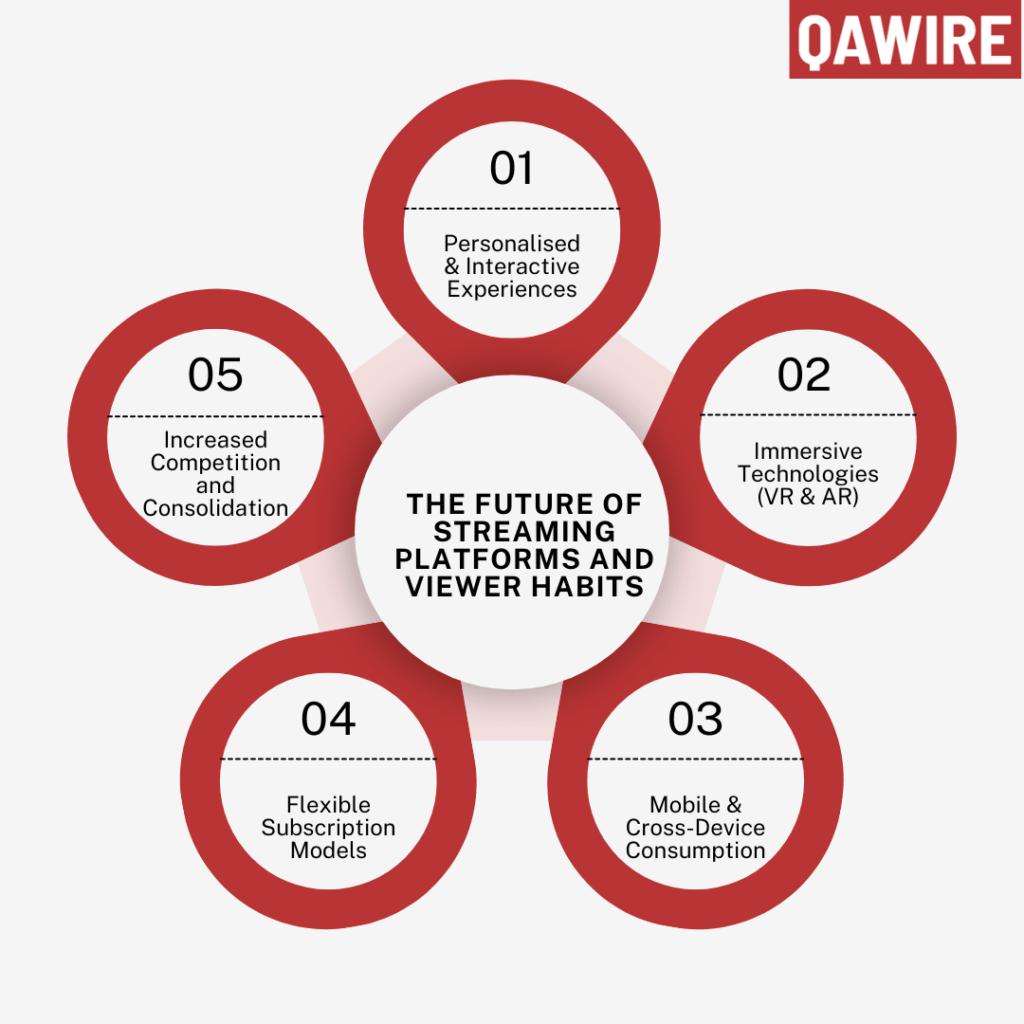The streaming platforms have transformed the entertainment industry majorly. Platforms like Netflix, Amazon Prime, and Disney+ have now become well-known. As it provides viewers the ability to watch content anywhere and at any time. However, as viewer habits change, streaming platforms must adapt to the change to stay alive. In this blog, we mention how streaming platforms are adjusting to adapt to the changing viewer habits.
Table of Contents:
Introduction to the Rise of Streaming Services.

The way of watching TV and movies has changed as a result of the streaming platform. As streaming services like Netflix provided a large library of content. These platforms make it easy for users to watch the shows and movies they want. They can watch it whenever they want by charging a monthly fee. As a result, binge-watching—watching entire seasons of television—has become a popular trend.
Following Netflix, other services like Disney+, Hulu and Amazon Prime Video join the market. They provide both unique and engaging content. Compared to traditional cable TV, these streaming services offered consumers more options. They can watch whenever it suits them thanks to the streaming services. Now viewers are free to enjoy content whenever they want without any disturbance.
How Streaming Services changes the TV Industry
| Aspect | Traditional TV | Streaming Platforms |
|---|---|---|
| Availability of Content | Already set timetable | Watch whenever you want. |
| Consumption of content. | It provides weekly episodes for viewing. | It allows you to watch entire seasons at once. |
| Model of subscription | Pay-per-view ad-supported cable subscriptions. | Some ad-supported subscription-based (e.g., Hulu and Netflix) |
| Library of content | Limited by cable provider and package | Mix of original and licensed content at large scale |
| Cost | High cost cable bundles with multiple channels | Low cost, affordable subscription fees (e.g., Netflix, Amazon Prime) |
| Ad Involvement | Frequent commercials (depending on the channel) | Limited or no ads (some platforms have ads with cheaper subscriptions) |
| Original Content | Limited to what networks produce | Original content (Netflix Originals and Amazon Originals) is heavily emphasised. |
| Global Reach | Region-specific (content licensing) | Global content with regional options (subtitles, dubbing) |
How Streaming Platforms are Adapting Changes

Shift to Niche Content
- Focus on Specific Content: Streaming services are shifting the content delivery way. From providing everything to focusing on niche content that attracts the audience more effectively.
- Audience Engagement: By providing the content that relates to viewers specific interests, these platforms are able to engage smaller groups of people. It offers personalised experiences that larger services platforms cannot provide.
Personalization and Recommendations
- Customised Content Suggestions: Netflix and Hulu, for example, employ intelligent algorithms to recommend shows based on your viewing history, making it simpler to discover content you will enjoy.
- Increased User Engagement: As a result of the recommendations being so personalised, viewers are more likely to remain on the platform and continue to watch.
- Example of Success: Netflix is an excellent platform for suggesting shows according to your interests, which keeps users satisfied and encourages them to watch more.
Mobile-Optimisation Strategy
- Mobile Optimisation: Streaming services are trying to improve their apps for mobile devices in order to provide a seamless experience as more people watch shows on their phones.
- Example: Quibi attempted to concentrate solely on mobile content, showing that consumers desire portable entertainment.
- Smooth Streaming Experience: Platforms like YouTube and Netflix have adapted by ensuring their apps provide smooth performance, offline viewing, and mobile-friendly content.
Interactive and Immersive Content
- Growing Trend: Streaming services are starting to offer content in which viewers have choices that impact the plot. For instance, you can decide how the episode develops in Netflix series like Bandersnatch.
- Viewer Engagement: Because viewers have control over the outcome, they feel more involved with this type of content.
- Benefits for Retention: By providing a distinctive and intimate experience, interactive series like “The Path” on Amazon Prime hold viewers’ attention for longer.
Social Features and Community Building
- Fostering Communities: Platforms like Twitch and YouTube Live encourage social interactions around content, building a sense of community through live chats and real-time discussions.
- Shared Viewing Experience: These platforms offer sharing their viewing experience, so people can share their experience and problems, if any. For instance, the Facebook app allows viewers to comment and share content, fostering a social activity experience.
- Long-Term Engagement: Social features help in viewer engagement, creating a space where viewers can interact with others who share similar content interests.
Effects of Streaming Services on Society
Society has seen many changes in the way people access and experience media. Platforms like Netflix, Amazon Prime, Disney+, and Spotify are taking most of the attention of viewers. While these streaming services have provided a more effortless variety of content, they have also brought some notable impact. These are both positive and negative aspects of society mentioned below.
- Personalised and High-Quality Content: Streaming platforms focus on particular topics according to viewer choices. It improves the viewing experience. Also, these platforms are focusing on providing high-quality content and speed.
- Binge-Watching Culture: The release of entire seasons at once helps engage with the demand for binge-watching, keeping viewers interested for longer periods.
- Mobile & Multi-device Accessibility: Increased flexibility in the way and location of the content consumed, enabling users to watch on mobile and multi-device devices. It means they can watch shows or movies anywhere and anytime.
- Competition with Other Digital Entertainments: Streaming services face competition from social media, gaming, and other digital platforms in addition to traditional TV.
- Continuous Innovation: To keep consumers interested in their content, streaming services must continuously develop fresh and imaginative ideas.
The Future of Streaming Platforms and Viewer Habits

Personalised & Interactive Experiences
AI and machine learning will play an important role in offering more good view experiences as streaming platforms are increasing. By analysing user preferences, watch history, and interactions, these platforms can provide the right content recommendations. It ensures that viewers find shows and movies that are made to their specific taste.
Immersive Technologies (VR & AR)
These streams also can include the integration of virtual reality (VR) and augmented reality (AR) in the future. It will create a great and interactive viewing experience. These innovations might change entirely new genres of content, as they are fully engaging VR movies or sports events where viewers can choose their opinion in real time.
Mobile & Cross-Device Consumption
Streaming platforms will continue to focus on providing an effortless multi-device experience, as now most of the population depends on smartphones and tablets. With this, the viewer will be able to start watching content on one device and continue on another device also. This increases flexibility, so users can watch content anywhere, anytime, without any disturbance.
Flexible Subscription Models
As there are more streaming platforms in the future, this will create more variety of subscription models. It helps with different viewing preferences and budgets. It can provide bundled services that combine streaming with other content benefits like music or gaming subscriptions. By providing this, it will become more popular, as it offers more value and choice to customers.
Increased Competition and Consolidation
The streaming platforms will see more connection as smaller platforms either merge or get acquired by the big companies. At the same time, new startups of streaming will continue to disrupt the market with new features or unique content offerings. To be successful, a platform will need to stay updated with new trends and improve continuously. Always explore strategic partnerships with other entertainment industries like gaming, music, and social media.
Conclusion
In conclusion, streaming platforms offer more flexibility to watch content, and they majorly change the way we watch TV and movies. These platforms are continuously finding new ways to adapt to the changes in viewer habits. These streaming services are working hard to stay in a competitive market, from providing personalised recommendations to niche content. Mobile-first strategies, engaging content, and community-building features are some ways that platforms are adapting. In the future of streaming services, we can see more interesting changes. Through technology, flexible subscription models, and increased competition. But one thing is clear: streaming platforms will continue for years to come.
